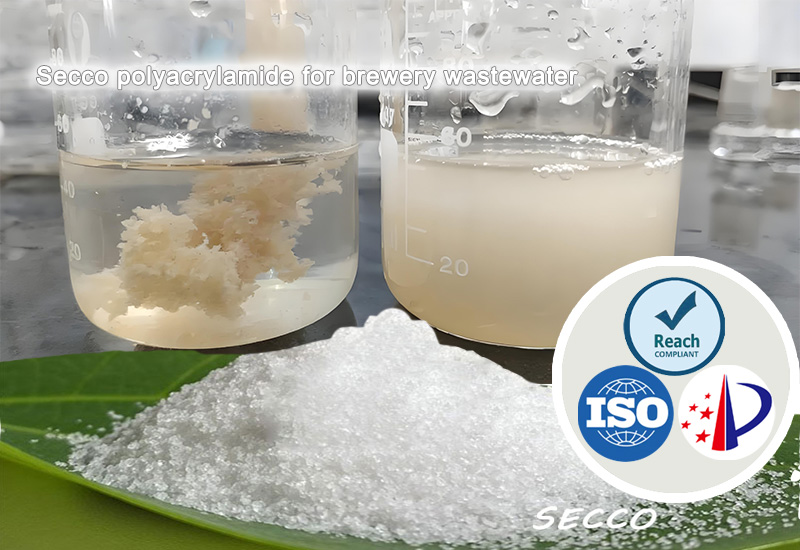In brewery wastewater treatment, the selection and application of polyacrylamide (PAM) significantly impact treatment efficiency and operational costs. Below is a detailed analysis of PAM selection and performance based on brewery wastewater characteristics.

1. Characteristics of Brewery Wastewater
High organic content: Rich in sugars, proteins, and starches (high COD/BOD).
Suspended solids (SS): Yeast residues, grain fibers, and colloidal particles.
Variable水质 (pH 4–6): Fluctuations due to brewing, fermentation, and cleaning processes.
High biodegradability: Suitable for biological treatment but requires pretreatment to reduce organic load.
2. Key Factors in PAM Selection
(1) Ionic Type Selection
Cationic PAM (CPAM)
Application: Sludge dewatering (e.g., after activated sludge process).
Function: Neutralizes negatively charged colloids, improves sludge settling, and reduces moisture content (to ≤80%).
Recommended: Medium-high charge density (60–80%), molecular weight (MW) 8–12 million.
Anionic PAM (APAM)
Application: Primary sedimentation (pretreatment for SS removal).
Function: Bridges suspended particles via adsorption, forming large flocs.
Recommended: Medium-high MW (10–15 million), 10–30% hydrolysis.
Non-ionic PAM (NPAM)
Application: Neutral or fluctuating pH conditions, or when metal ions are present.
Function: Relies on hydrogen bonding; often used with coagulants (e.g., PAC).
(2) Molecular Weight (MW) Selection
High SS wastewater: High MW (≥15 million) for better bridging.
Soluble organics: Lower MW PAM may assist coagulation.
(3) Dosage & Mixing
Dissolution: 0.1–0.3% solution with gentle stirring (avoid shear degradation).
Dosage: 1–10 ppm (determined via jar testing).
3. Treatment Performance Comparison
Parameter APAM (Pretreatment) CPAM (Sludge Dewatering)
COD Removal 30–50% (with PAC) Indirect (sludge thickening)
SS Removal 70–90% –
Sludge Cake Moisture – 75–80%
Settling Speed Significantly improved Enhanced compressibility
4. Key Considerations
Jar Testing: Essential due to wastewater variability.
pH Adjustment: Optimal PAM performance at pH 6–8 (lime may be needed for acidic wastewater).
Safety: Ensure acrylamide monomer content ≤0.05% (regulatory compliance).
Cost-Benefit: CPAM is more expensive but improves dewatering efficiency.
5. Typical Treatment Process
Flow: Screening → Equalization (pH adjustment) → PAC + APAM coagulation → UASB/Aerobic Process → CPAM sludge dewatering.
By selecting the appropriate PAM type, breweries can enhance wastewater treatability, improve sludge handling, and reduce disposal costs.